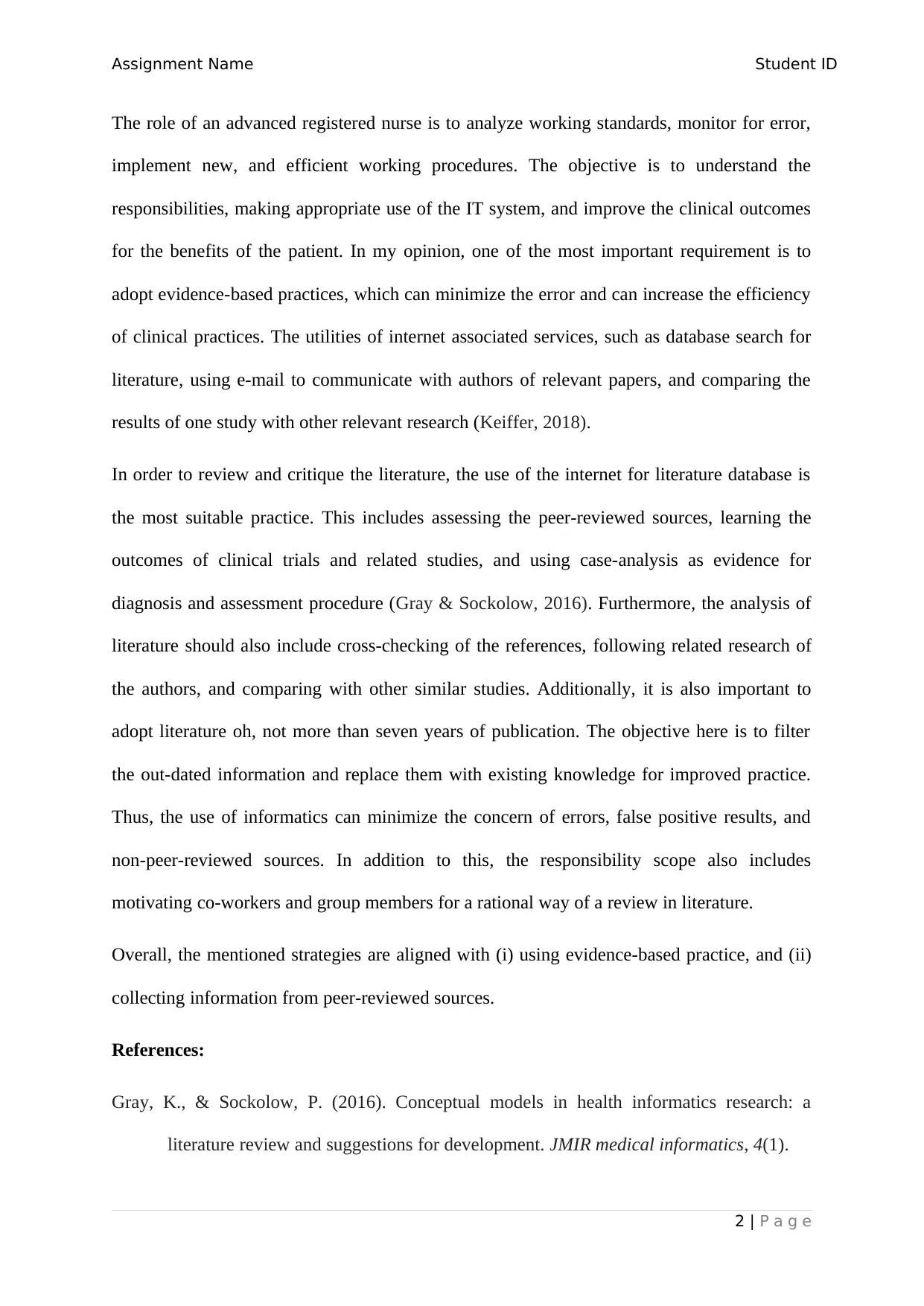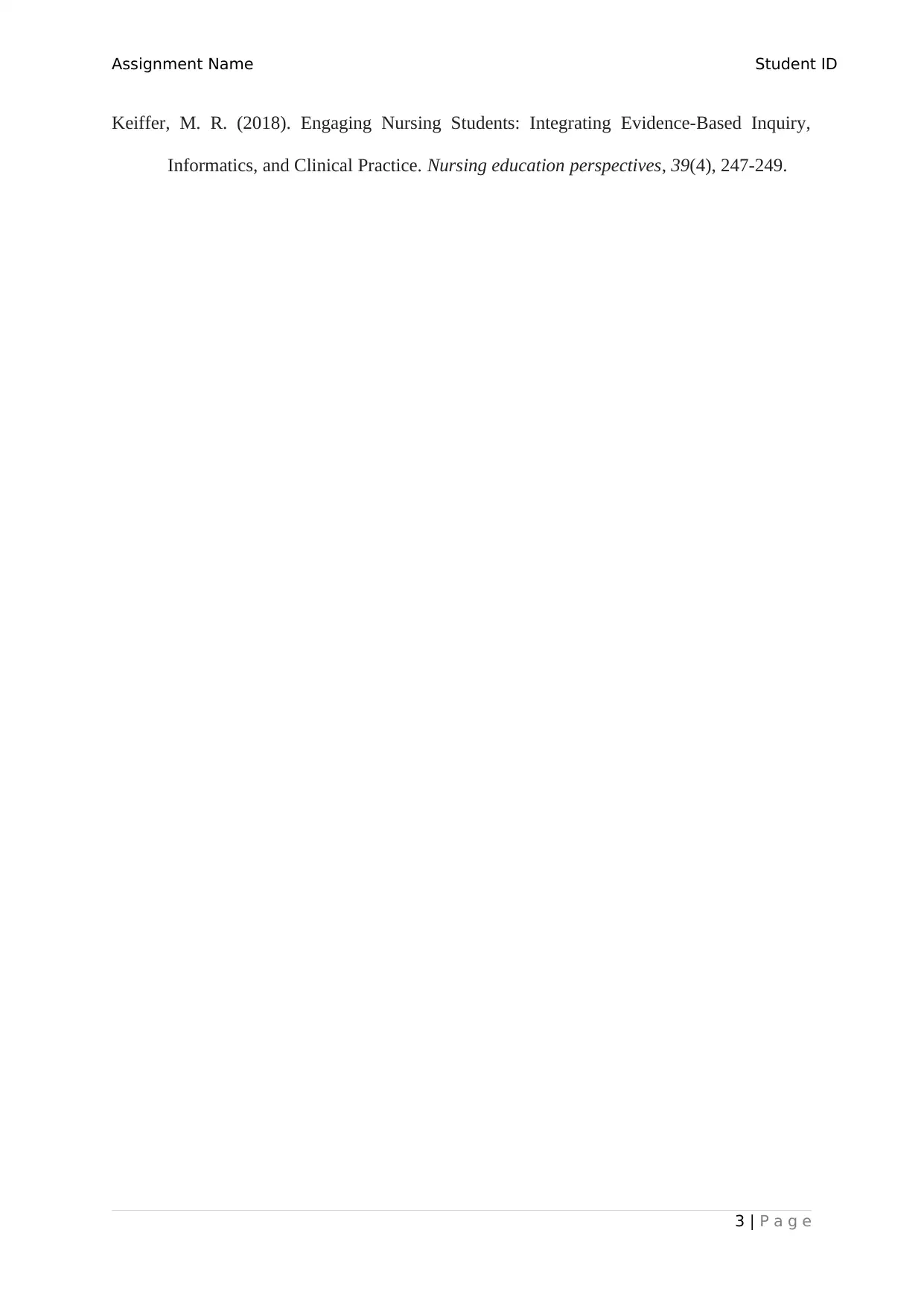Nursing Informatics: Analyzing Clinical Practices and Patient Outcomes
VerifiedAdded on 2023/04/08
|4
|346
|479
Report
AI Summary
This report delves into the realm of nursing informatics, emphasizing the importance of analyzing and improving clinical practices through evidence-based research. The assignment highlights the role of an advanced registered nurse in utilizing informatics tools, such as literature databases and peer-reviewed sources, to enhance patient care and minimize errors. It underscores the significance of staying updated with current research, specifically referencing literature no more than seven years old, to ensure the application of the most relevant and effective practices. The report also touches upon the importance of collaborative efforts and the integration of technology to achieve optimal clinical outcomes. The provided references support the application of informatics and the process of literature review within nursing practice to ensure that the information used is reliable and up to date.
1 out of 4











![[object Object]](/_next/static/media/star-bottom.7253800d.svg)